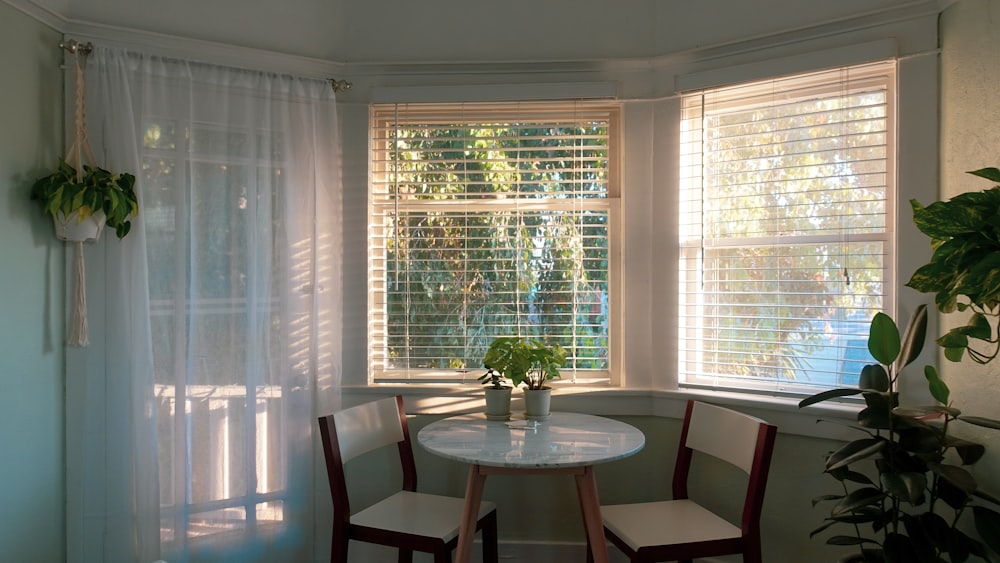Corded Vs Cordless Blinds: Which Is The Best Option For Your Home?

Choosing window treatments for your home means a lot more than just picking the right colour and material. You're choosing the style and functionality of your windows for years to come – and that includes deciding between corded and cordless blinds.
Corded and cordless window coverings both offer unique features that can help you create the perfect look for your home. But before you make a decision, it's important to understand the differences between the two styles so you can choose the right one for your needs.
Let's take a deep-dive look into the differences between corded and cordless blinds, so you can make an informed decision that fits your lifestyle.
Choose From Our Most Stylish Vertical Blinds
Corded Blinds
Most people are already familiar with corded blinds, having either grown up with them in the home or seen them in a variety of other settings. Corded blinds are exactly what they sound like – window treatments that are operated by cords, which can be used to open and close the blinds as needed.
There are a few different cords at play, especially in Venetian blinds:
- The drawstring on one side is used to raise and lower the bottom rail.
- The tilt cords on the opposite side are used to tilt the slats in order to control how much light gets into the room.
- The loop cords are used to rotate the slats and direct the light in a different direction.
Corded blinds are most often the Venetian variety, but Roman shades are also available with cords, as are vertical blinds and other varieties.
Pros and Cons
As with any window treatment, corded blinds come with both advantages and disadvantages.
The benefits of having corded blinds are the affordability and wide range of options available. They are relatively easy to use and come in a variety of materials, sizes, colours, and styles – so you’re sure to find something that fits your home decor perfectly.
For instance, Venetian blinds can be found in wood, faux wood, plastic, and aluminum, allowing you to find a style that fits your home’s aesthetic. Faux wood blinds are particularly stylish without breaking the bank.
The downsides of corded blinds are mostly related to the blind cords themselves; children and pets can easily become entangled in the dangling cords, leading to potential safety hazards. Corded blinds can also be frustrating to maintain when the cords become knotted or tangled, and they can be difficult to clean as well.
Cordless Blinds
Blinds of the cordless variety are a relatively new innovation that provides the same look and feel as corded blinds without the potential hazards associated with window cords. They are ideal for homes with young children or pets, as there is no risk of them becoming tangled in the cords.
Cordless window treatments are available in a variety of materials and styles, just like corded blinds. However, one key difference between these two types of window treatments is that the cordless option uses different mechanisms to raise and lower the blinds.
Most cordless blinds use an internal spring or motorized mechanism that allows you to adjust the height of your windows with the press of a button or pull of a tab. Roller shades, for instance, often have a tab at the bottom that you can pull to raise and lower the shade. Pleated shades are fitted to the window frame and can be raised or lowered with a simple push.
Then there are motorized window blinds, which use a remote control to open and close the shades. These are perfect if your windows are in hard-to-reach places or you just prefer a more automated approach.
CHECK OUT OUR COLLECTION OF WINDOW BLINDS
Pros and Cons
Cordless blinds offer a few unique advantages over their corded counterparts. First of all, they’re much safer, since there are no cords that could potentially be a hazard to pets or children. This also makes them easier to operate and more aesthetically pleasing.
Blinds with no pull cords are far less likely to get tangled; the strings won't wear out over time, and they're also more energy efficient since less light can enter through the slats. Cordless blinds also tend to be quieter than corded ones, making them a great choice for bedrooms or other areas where you want minimal noise disturbance.
However, there are some drawbacks to consider. Cordless blinds generally cost a lot more than corded blinds, and they may require professional installation. They can also be difficult to repair if something goes wrong with the mechanism or motor.
Factors to Consider When Choosing Between Corded and Cordless Blinds
Now that you're aware of the key differences between corded and cordless blinds, it's time to decide which one is the best option for your home.
Safety should be a top priority when selecting window treatments for homes with young children or pets. If your windows are near the floor or at a reachable height for toddlers, cordless blinds are the safest option. Children and pets are prone to finding themselves in hazardous situations.
Another factor to consider is the cost. Cordless blinds are more expensive than corded blinds; they contain a lot more moving parts, which can add up quickly. If budget is an issue, corded blinds may be the better option for you.
Finally, think about how often you'll use your window treatments. Cordless blinds are ideal if you want to adjust them frequently since they're the sturdier option, but if you're looking for something that won't require much maintenance and will last a long time, corded blinds are the way to go.
It's important to weigh all the pros and cons of each type of window treatment before making a decision. Both corded and cordless blinds have their own unique advantages and disadvantages, so take the time to evaluate which one is best suited for your home.
Which Blinds Are Better – Cordless or Corded?
The final decision on whether to choose corded or cordless blinds depends on several factors. If safety is a top priority, then the clear choice is cordless blinds. However, if you’re looking for something that won’t require much maintenance and will last a long time, then corded blinds are the way to go.
Ultimately, both types of window treatments have their advantages and disadvantages; there is no one right or wrong answer.
There's no denying that the newer trends and innovations are very convenient if you have the budget for it. A remote control mechanism takes away the hassles of manually adjusting the slats and makes it easier to control light and temperature in a room.
Corded blinds are going to give you a much more classic look and feel in your home, while cordless blinds offer a modern touch. Whatever you decide, make sure to take into consideration all the factors that are important for your home before making a final choice.
GET YOUR OWN CORDLESS HARDWOOD BLINDS TODAY
Corded or Cordless – We’ve Got You Covered
Whether you go with corded or cordless blinds, you're going to be met with both advantages and disadvantages. Evaluate which type of window treatment is best suited for your home, taking into consideration safety, budget and maintenance.
At the end of the day, it all comes down to personal preference; no matter what you choose, there's a perfect option out there that will fit both your needs and design style.
Here at Factory Direct Blinds, we've got you covered when it comes to corded and cordless blinds. With our wide selection of shades, shutters, and more, you're sure to find the perfect window treatment for your home.
Get in touch with us today and let's get started finding you the perfect window treatment!
FAQs
Here are a few FAQs about corded and cordless blinds:
Do cordless blinds last longer than corded?
Yes, cordless blinds are generally more durable than corded blinds since they contain sturdier mechanisms and are less prone to breakage.
What is the advantage of cordless blinds?
The main advantage of cordless blinds is that they are safer for homes with young children and pets, since there’s no risk of strangulation. They also tend to be more durable than corded blinds.
Why are most blinds cordless now?
Safety is the primary reason why most blinds are now cordless. With young children and pets in the home, it’s important to eliminate any risk of strangulation from cords.
How do cordless blinds stay in place?
Cordless blinds usually rely on either spring tension or magnets to stay in place. Spring-tension blinds use a metal rod that applies tension to the headrail, allowing you to adjust the slats without any cords. Magnetic systems are also becoming increasingly popular, using powerful magnets that keep the slats in place when adjusted.






